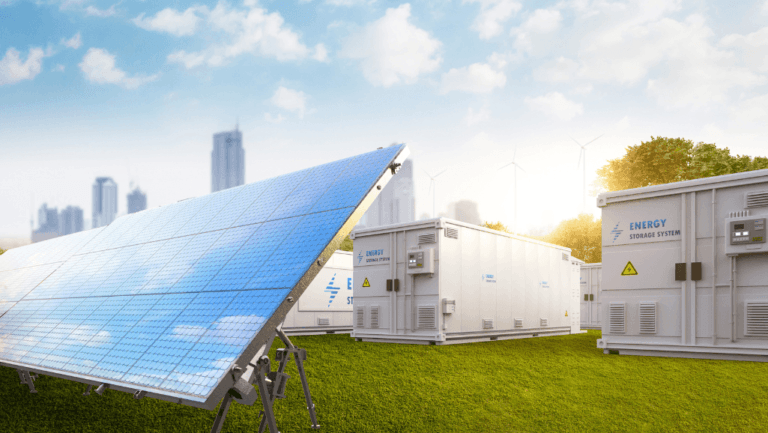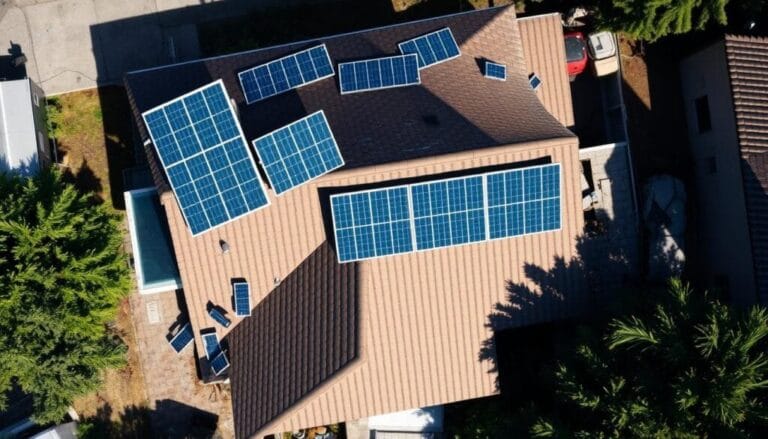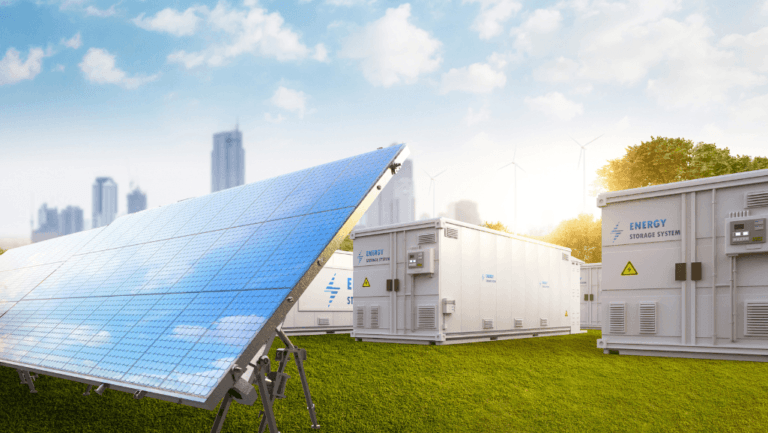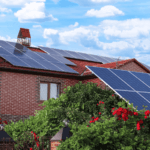Do Solar Panels Save You Money?
Many homeowners ask, “Does solar panels save money?” The short answer is yes in many cases: falling average cost per watt, better panel efficiency, and tax incentives mean installing solar can cut your electric bills and deliver long-term savings while supporting renewable energy. Solar energy reduces reliance on the grid and helps lock in lower energy costs over time.
To make these claims useful, here are dated figures and clear assumptions: as of the latest national averages, the typical U.S. electricity rate is roughly $0.17 per kWh (update with your local utility for accuracy), and an average household annual spend near $1,834 is often cited by industry sources. A larger home system (about an 11 kW solar system) after federal tax credits and typical state incentives can have an estimated net cost in the low-to-mid $20,000 range depending on rebates and local installation rates; pre-incentive upfront costs for a full residential install commonly range toward $30,000 in some markets. Net metering and state incentives further reduce the payback time and improve overall savings.
Although the initial installation cost can be substantial, solar systems often pay back over time — published payback ranges vary widely (commonly from roughly 4 to 18 years depending on location, incentives, and energy use). Over a solar system’s 25–30 year life, cumulative savings frequently fall between the low tens of thousands and as high as six figures in high-rate, high-production states. That range reflects differences in local electricity rates, system size, panel efficiency, and annual production.
Key Takeaways
- Solar panels can meaningfully reduce electric bills and help homeowners save money over the long term; typical lifetime savings are commonly reported in the tens of thousands (exact amount depends on local factors).
- Average cost per residential system has fallen substantially over the past two decades; verify the current average cost per watt for up-to-date comparisons.
- Solar panels perform across many climates, but state-level rates and sunlight (production) strongly affect savings.
- Federal tax credits and local incentives lower the net cost of installing solar; check current tax credit (ITC) details and state incentives when calculating your investment.
- Net metering and surplus production credits can offset future utility bills and shorten payback periods.
- Home value increases and reduced monthly bills add to the financial case; studies often show a measurable resale premium for homes with solar systems.
- Payback period and ROI depend on system size, panel quality, installation costs, local electricity rates, and how much of your production you can use vs. export.
Quick example: a typical 6 kW system in a moderate-sun state producing X kWh/year can cut a $150–$200 monthly electric bill dramatically; a larger 11 kW system in a high-rate, sunny state will produce substantially more energy and thus higher savings. Use a local calculator to estimate production, installation cost, incentives, and payback for your home.
Estimate your savings — check local rates, state incentives, and net metering rules to get an accurate picture for your home.
Analyzing Solar Panel Cost Savings
Thinking about solar energy starts with a clear look at upfront costs versus long-term savings. To judge whether solar panels save money for your home, compare local electricity rates, available incentives, and the production you can expect from a properly sized solar system.
Understanding the Initial Investment vs. Long-term Savings
The main hurdle is the initial installation cost. A representative small-to-mid residential system such as a 6-kilowatt system often has an average cost in the mid-to-high thousands depending on region — historically, many estimates place installed prices in the $2.30–$3.82 cost per watt range (source and date should be checked when you publish). After federal and state incentives (for example, the federal tax credit), the net investment drops substantially.
Example math you can reproduce: a 6 kW system that produces roughly X kWh/year (production depends on location and panel orientation) multiplied by the local electricity rate gives annual dollar savings. For many homeowners, that reduces monthly electric bills dramatically — published examples show post-solar annual bills falling to low hundreds in favorable cases versus pre-solar bills in the thousands, but these numbers depend on household use, system size, and local rates.
The Impact of Local Electricity Costs on Solar Savings
Location is a major factor. The U.S. average electricity rate changes over time (the figure $0.1301 per kWh appears in some datasets but should be verified with the latest EIA data). States with higher retail electricity prices like California and Hawaii typically see faster returns on a given system because each kWh produced offsets more expensive grid power.
That’s why payback periods are shorter in sunny, high-rate states such as California, Arizona, and Hawaii. In contrast, lower-rate states yield longer payback times. Always check local utility rates and available net metering or export compensation rules when estimating savings.
| StateAverage Electricity Cost (per kWh)Expected Annual Savings | ||
| California | $0.199 | $800 |
| Arizona | $0.129 | $500 |
| Texas | $0.118 | $300 |
How to use this table: multiply the annual production of your planned solar panel system (kWh/year) by your state or utility rate to estimate annual dollar savings. Then subtract expected annual maintenance and factor in incentives to calculate payback time. For an accurate, local estimate, use a tool like the EIA rate lookup or a solar calculator from a trusted provider and consider getting a professional site assessment for production estimates and installation quotes.
Calculating Your Solar Panels ROI
Understanding the return on investment (ROI) for solar panels is essential for homeowners considering this renewable energy option. ROI compares the upfront cost of purchasing and installing a solar system with the ongoing savings on electricity bills, plus incentives and any added home value.
Factors Influencing Return on Investment
Key factors that drive ROI include installation costs, local electricity rates, system size and expected annual production, panel efficiency, available incentives (tax credits and rebates), and whether your utility offers favorable net metering. Installed prices vary by market; many estimates put average residential installs in the mid-to-high thousands, but actual costs depend on design and region. The federal tax credit (check current ITC percentage and eligibility as it can change) can significantly lower net investment, and some states provide additional credits or rebates.
Solar systems typically last 25–30 years, so calculating ROI means projecting multi-year savings and accounting for system degradation and potential maintenance costs.
Tracking Decreases in Energy Bills After Solar Installation
After installing solar panels, track your monthly and yearly electric bills to measure real savings. Many homeowners see meaningful reductions in their utility bills—published averages often cite monthly savings in the low hundreds, though this varies by home size and location.
Use an energy bill tracking tool or spreadsheet to log pre- and post-installation bills, note exported energy credits from net metering, and monitor system production reported by your inverter or monitoring portal. That data helps check whether your projected payback timeline is on track.
Typical payback ranges cited in industry sources span from roughly 8 to 13 years in many markets, but payback can be shorter in high-rate, sunny states and longer where electricity rates are low or incentives are limited. Excess production credited to your utility can shorten payback further or generate offset value on future electric bills.
Beyond direct bill savings, installing solar often increases home resale value—studies commonly report a few percent uplift in sale price for homes with owned systems—adding to the overall financial return.
Simple ROI formula (practical): (Total net installed cost after incentives) ÷ (Annual net dollar savings from reduced electric bills + annual value of net metering credits + estimated annual home value benefit) = approximate payback years. Adjust inputs for expected annual production, escalation in electricity rates, and system degradation.
Two quick example profiles (illustrative — plug in local numbers):
- 6 kW system in a moderate-sun state: Installed cost $16,000 pre-incentives; after a representative tax credit, net cost falls; estimated production covers most household use, saving roughly $900–$1,500 per year on electricity. Payback ≈ 8–12 years depending on rates and incentives.
- 11 kW system in a high-rate sunny state: Installed cost $30,000 pre-incentives; after incentives and higher production, annual savings might be $2,000–$3,500 (or more). Payback ≈ 5–9 years in favorable markets.
These examples are directional—verify by running a personalized calculation that uses your local rates, your home’s historical energy use, and realistic production estimates for your site.
Run a personalized ROI calculation to estimate your net investment, annual savings, payback period, and long-term financial impact based on up-to-date incentives and local utility rules including net metering.
The Economic Advantages of Solar Panels
Understanding the economic advantages of solar panels requires looking beyond the upfront sticker price to long-term solar energy savings, production, and the reduced exposure to rising electricity rates. A properly sized solar system typically lasts 25–30 years, which spreads the initial installation costs over decades of lower utility bills and stable energy cost expectations.
Solar panels also frequently boost resale value. Multiple studies (for example, national real-estate analyses and NREL summaries) show an uplift in home value for properties with owned solar systems — estimates vary, but many sources report a measurable premium (often reported as a few percent). When you combine ongoing monthly savings on your electric bill with higher sale value, the total financial picture becomes more compelling.
Below is a concise comparison showing typical cost elements and outcomes for an average homeowner considering a residential solar panel install versus keeping conventional grid power:
| Cost ElementWith Solar PanelsWithout Solar Panels | ||
| Initial Installation | $18,000 (pre-incentives; actual installed price varies by market) | $0 |
| Annual Energy Savings | $1,200 (approx.; depends on production and local rate) | $0 |
| Resale Value Increase | ~4% higher home value (varies by study and market) | No increase |
| Maintenance Cost (Annual) | $150 for inspection/cleaning (typical low maintenance) | $0 |
| ROI Period | 6–10 years (depends on incentives and rates) | Not applicable |
Notes on the table: the numbers above are illustrative and should be updated with current local pricing, incentives, and real-estate data when you calculate your own scenario. The amount of savings and the ROI period hinge on your state’s electricity rates, the system’s annual production (kWh), and whether you benefit from strong net metering or other export compensation.
When you include federal and state incentives — for example, the federal Investment Tax Credit (check the current percent and eligibility) and local rebates — the net cost per watt and the payback timeline improve substantially. In states with favorable sunlight and higher electricity prices (for example, parts of Florida, California, and Arizona), the economic case becomes particularly strong.
In short, solar power is not just an environmental choice; for many homeowners it is a pragmatic financial one that reduces long-term costs, stabilizes household energy spending, and can increase property value — provided you evaluate local factors, incentives, and realistic production estimates before proceeding.
Does Solar Panels Save Money – Evaluating Financial Returns
When evaluating financial returns from solar panels, look at three things: how much you reduce your monthly electricity bill, the value of federal and state incentives, and any increase in home resale value. These components together determine whether installing a solar system is a good investment for your home.
| StatisticDetail | |
| Average Payback Period | 5–7 years (varies by state, system size, and incentives) |
| Additional Home Value | ~4.1% (reported in several real-estate studies; varies by market) |
| Average Lifetime Savings | ~$21,000 (illustrative; depends on local electricity rates and production) |
| Annual Energy Bill Savings | ~$1,530 (sample national estimate; your savings will vary) |
| Federal Tax Credit | 30% (check current IRS guidance and phaseout dates for exact eligibility) |
Notes on these figures: the items above are averages drawn from industry analyses—actual results depend on your local retail electricity rates, system production (kWh/year), and whether you can utilize tax credits or state rebates. Always verify the current federal tax credit percentage and state incentives via official sources (IRS, DSIRE).
There are environmental returns as well: a typical residential solar system offsets several tons of CO2 annually versus grid power, translating to both carbon-reduction benefits and an indirect economic benefit when factoring social-cost estimates of emissions.
For readers: use a trusted calculator (EnergySage, NREL tools, or your utility’s estimator) to model your situation. These tools let you input your historical electricity usage, local rates, and available incentives to produce a tailored estimate of payback years, lifetime savings, and expected annual savings.
Find local incentives & run a personalized savings estimate — then request quotes from installers in your state to confirm actual installed costs and production estimates.
Understanding the Costs: How Much Do Solar Panels Save?
Most homeowners consider installing solar panels because they want to save money and reduce their environmental footprint. Upfront costs can be substantial, but when you compare those costs to decades of lower electricity bills and potential incentives, solar often becomes a compelling financial choice.
Assessing the Average Energy Consumption Savings
Use current, local numbers when estimating savings. For context, U.S. average monthly electricity bills have ranged around $120–$130 in recent years (verify with the latest EIA data for your publication date). State bills vary widely—examples cited in past datasets include Utah and Hawaii at roughly $80.87 and $177.78 respectively (check the source year before publishing). Your annual savings depend on your home’s usage, the system size, and local rates.
A 7.15 kW solar system is often near the average-sized install for many homes and can match average consumption in some states. Installed prices have varied; early‑2023 averages around $3.28 cost per watt were reported by industry aggregators (update this figure to the latest market data). After incentives, such a system can significantly reduce your annual electric bill.
Practical next step: estimate your system’s yearly production (kWh) using a location-specific tool, then multiply production by your local $/kWh rate to estimate annual dollar savings. Subtract expected annual maintenance and factor in incentive amounts to calculate payback time.
Comparing Solar Panels to Traditional Energy Sources
Traditional energy costs are subject to fuel market swings and geopolitical events, while solar generation is more predictable once installed. Solar power stabilizes a household’s energy costs because generation is not tied to fuel price volatility. Federal and state incentives (and net metering policies) further improve economics by lowering effective installation cost or crediting exported energy.
Electricity rates differ greatly by state—examples of past reported rates include Washington at ~10.11¢/kWh and Hawaii at ~33.49¢/kWh—making solar much more attractive in higher-rate states. Always confirm current retail rates and net metering rules for precise comparisons.
In short, while the initial cost of solar can be higher than doing nothing, the long-term savings on electricity bills, protection from rate inflation, and environmental benefits typically make solar a strong alternative to traditional grid-only energy in many regions.
| StateAverage Monthly Electricity Bill (Pre-Solar)Estimated Monthly Solar Savings | ||
| Utah | $80.87 | $80.87 |
| Hawaii | $177.78 | $177.78 |
| Washington | $121.01 | $110.00 (approx.) |
How these numbers were generated: the “Estimated Monthly Solar Savings” column assumes a system sized to cover a large share of typical household consumption in that state and uses representative historical rates—update the values with your utility’s current $/kWh and a site-specific production estimate to get an accurate picture.
For a tailored estimate of how much solar panels could save you, use an online calculator (EnergySage, NREL PVWatts) or check state incentive listings—those tools will combine your location, expected production, current local rates, and available rebates to show realistic payback timelines and lifetime savings.
Assessing the Solar Panels Financial Benefits
Switching to solar energy is both an environmental choice and a pragmatic way to lower household electricity costs. Over time, properly designed solar systems reduce monthly bills, provide predictable energy rates compared with volatile fossil fuel prices, and—when combined with incentives—can deliver strong net financial returns.
Exploring Tax Incentives and Solar Rebates
Tax incentives and rebates are a primary reason solar becomes affordable. The federal Investment Tax Credit (ITC) has historically covered a large portion of system cost—confirm the current ITC percentage and eligibility at the IRS site before making decisions. In addition, many states and utilities offer solar rebates, performance-based incentives, or property tax exclusions; the DSIRE database is the best place to check up-to-date, state-level incentives and programs.
Example: on a $20,000 installed system, a 30% tax credit reduces federal tax liability by $6,000 (subject to eligibility and tax liability). State rebates or local credits can further lower the net investment and shorten payback time.
The Long-term Financial Impacts of Solar Energy Use
Solar systems typically have service lives of 25–30 years. Over that span, savings on grid electricity and any export credits from net metering accumulate into substantial lifetime savings. At the same time, solar technology and installation costs have declined substantially over recent decades, improving the economics for homeowners.
Historic growth in U.S. solar capacity illustrates adoption trends (for example, capacity climbed from small single‑digit GW totals in the 2000s to much larger figures by the mid‑2010s and beyond). Cost reductions have accompanied that scale-up—confirm current published percentages from NREL or industry reports for precise figures today.
| YearSolar Power Capacity (GW)Estimated Cost Reduction (%) | ||
| 2008 | 1.2 | 0% (baseline) |
| 2015 | 27.4 | Approx. 70% (illustrative historic decline) |
Note: the table shows illustrative historic milestones; update numbers with the latest authoritative data (NREL, IEA) when publishing. The key takeaway is that broader deployment and manufacturing improvements have driven down the average cost per watt and improved return prospects for homeowners.
In conclusion, the solar financial benefits for homeowners come from three linked sources: lower ongoing electricity bills, upfront and ongoing incentives (tax credits and rebates), and potential increases in property value. To assess your specific situation, check current federal and state tax rules, run a local production estimate, and get installer quotes to model net cost, payback years, and long-term savings.
Maximizing Savings: Decreasing Energy Bills with Solar Panels
The search for maximizing solar savings and decreasing electric bills is simpler today thanks to improved panel efficiency, better inverters, and smarter home energy management. Properly sized solar panels reduce reliance on your utility, lower monthly bills, and can raise resale value — all while delivering clean, renewable energy.
Financial Impact: Getting the most from a solar purchase means more than the installation expense. Understand net metering rules, apply the federal and state credit and rebate programs, and combine solar with energy-efficiency measures to maximize savings. In high-rate markets like California, these elements together can dramatically shorten payback time.
| BenefitDescriptionApproximate Savings | ||
| Solar Panel Installation | Reduces reliance on grid power and lowers monthly bills when production matches usage. | $77/month* (example average; varies by state and production) |
| Federal Solar Investment Tax Credit (ITC) | Reduces upfront cost via a federal tax credit — confirm current % and eligibility. | Significant reduction in upfront costs |
| Net Metering | Utility credit or compensation for surplus energy returned to the grid; policies vary by utility and state. | Can offset future bills or lead to credits |
| Home Value Increase | Owned solar can increase property valuation in many markets. | Up to $15,000 additional value (market-dependent) |
Battery storage can further increase your monthly savings by boosting self-consumption (using more of the energy your panels produce) and reducing grid purchases during peak-rate periods. For example, adding a battery that shifts daytime production to evening use can reduce peak-time purchases and increase the dollar value of your solar production.
Quick wins to maximize your solar investment:
- Perform a home energy audit and add measures (LEDs, smart thermostats, insulation) to lower baseline consumption.
- Optimize system size to match as much of your load as possible while considering export rules.
- Check state and utility net metering policies — some utilities provide full retail credits while others use lower export rates.
- Evaluate battery storage ROI if your utility has time-of-use rates or demand charges.
Because net metering and incentives vary by location, check your local utility rules and state programs before finalizing a design. See state net metering rules and incentives and use a battery ROI calculator to decide if adding storage will meaningfully improve your monthly savings.
State-by-State Solar Savings Breakdown
Looking at solar energy savings makes one thing clear: location matters. Sunlight levels, local electricity rates, and state or utility incentives combine to determine how much a homeowner can save with solar panels. The comparisons below illustrate how the same-size system can produce very different results across states.
Why Geographic Location Matters for Solar Panel Savings
Your site’s solar production (kWh/year) is driven by average sun exposure, panel tilt and orientation, shading, and local climate. States with more sun produce more kWh from the same-size system, so each kWh offsets more retail grid electricity and delivers greater dollar savings. Conversely, cloudier states produce less energy and typically have longer payback periods.
Important assumptions for the examples below: panels are roof-mounted at typical tilt, system losses and inverter inefficiency (roughly 10–15%) are included, system degradation ~0.5%/year, and a conservative rate escalation is applied when estimating long-term savings. Adjust these inputs for your specific site or use a state-specific calculator for precise estimates.
Comparative Analysis: Potential Savings Across Various States
The table below shows illustrative annual production and a 20‑year estimated savings figure for the same nominal system size in different states. These numbers are directional — actual results depend on your system size, orientation, and the retail price you pay for electricity.
| StateAnnual kWh ProductionEstimated Savings Over 20 Years | ||
| Arizona | 12,000 kWh | $96,000 |
| Washington | 6,500 kWh | $27,003 |
| California | 11,000 kWh | $113,272 |
How to interpret the table: multiply the annual production for your planned system by your local $/kWh rate (and include expected rate inflation and degradation) to estimate yearly dollar offsets, then sum over the chosen time horizon (20 years in this example). The “Estimated Savings” column reflects such calculations using representative local rates and assumed escalation — update with your current utility rates for accuracy.
Arizona and California show the largest savings because they combine high production (lots of sun) with relatively high retail electricity prices. Washington’s lower production and historically lower retail rates produce a smaller long-term dollar return on the same-size system.
To get a state-specific, personalized estimate, use a tool that factors local irradiance and utility rates (for example, NREL PVWatts or a reputable installer calculator), or check DSIRE for incentives in your state. Get a free state-specific incentives lookup and request a local quote to confirm production and payback timelines for your home.
Conclusion
This article demonstrates that, for many homeowners and businesses, investing in solar panels can be a smart financial decision as well as an environmental one. Installed costs vary by market — for example, residential installs in Seattle have been reported in ranges from about $10,000 to $30,000 depending on system size and local installation rates — so use local quotes to get an accurate upfront price.
The federal Investment Tax Credit (ITC) and state incentives significantly reduce the net cost of a system. When you combine those incentives with lower ongoing electricity bills, potential increases in property value, and reduced exposure to rising utility rates, the long-term financial case for solar often becomes compelling.
Typical pre‑incentive system cost ranges seen in some markets are roughly $17,400–$23,900 for common residential sizes, though actual installation and equipment choices change that amount. Because a solar system generally lasts 25–30 years, the cumulative savings on your electric bills — plus any earnings from net metering or other export programs — can make the up-front investment pay off over time.
Beyond direct savings, solar ownership often increases home resale value and contributes to energy independence by stabilizing household power costs. Commercial installations show similar long-term cost advantages at larger scale.
Do your homework before you invest: check your local solar production potential, get multiple installer quotes, and confirm current federal and state tax rules and rebate programs. Local factors (sunlight, utility rates, net metering and incentive availability) will determine the exact payback and lifetime benefit you can expect.
Next steps (quick): 1) Use a local solar savings calculator to estimate your production and payback; 2) check state incentives on DSIRE; 3) request 2–3 installer quotes for comparable system designs to compare costs and expected annual savings.


























